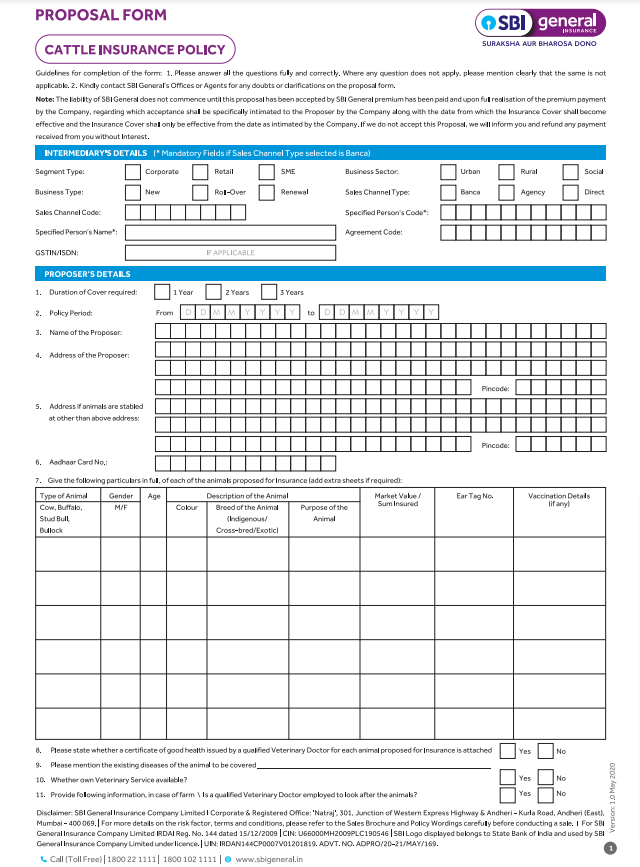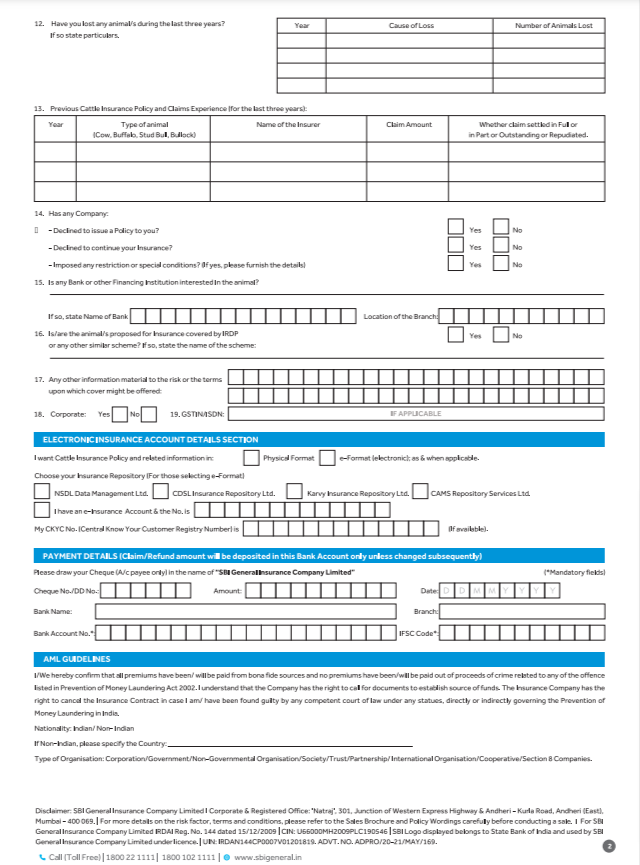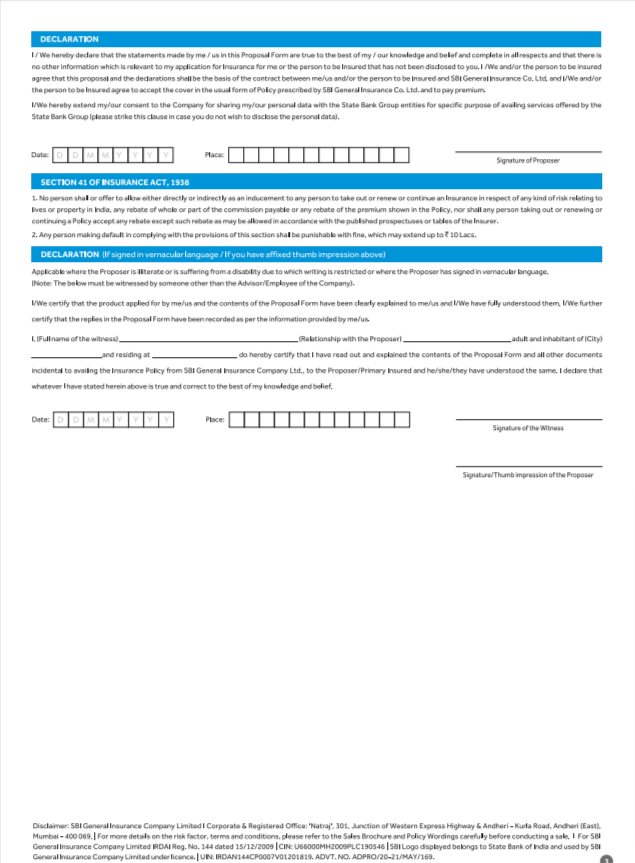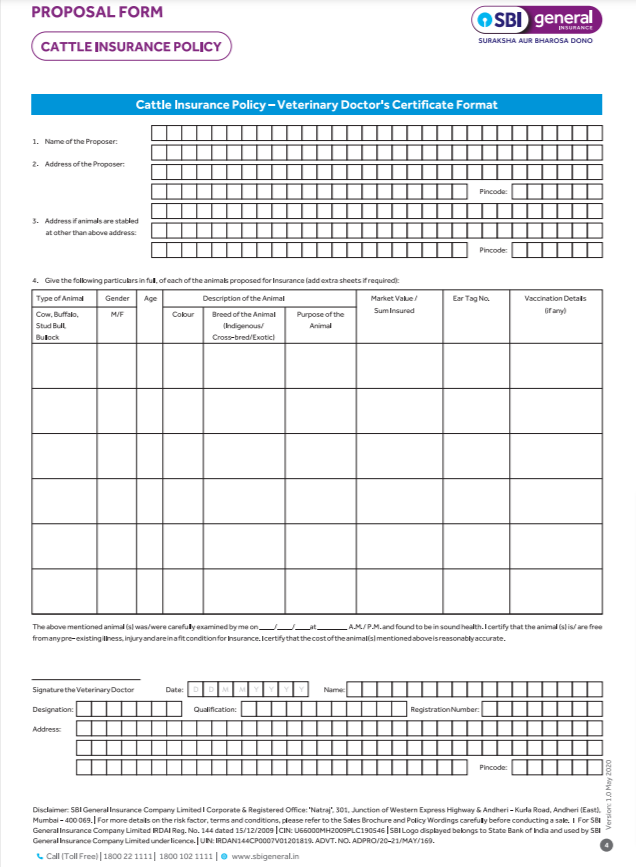This content has been archived. It may no longer be relevant
In 2005-06, 2006-07, and 2007-08 of the 10th Five Year Plan and the 11th Five Year Plan, the Livestock Insurance Scheme was piloted in 100 selected districts. It was later implemented on a regular basis in 100 newly selected districts from 2008-09. Later, the scheme was subsumed under the sub-mission of livestock development in the National Livestock Mission as a component titled Risk Management and Insurance.
By providing the farmers with a protection mechanism against any eventual loss of their animals due to death, this component seeks to help manage risk and uncertainty. It also seeks to demonstrate to the people the value of insurance of livestock.
Livestock Insurance Scheme Coverage:
The Livestock Insurance scheme is implemented in all the districts of the Country on 21 May 2014.
Livestock Insurance Scheme Animals Covered:
The indigenous/crossbred milch animals, pack animals (Horses, Donkeys, Mules, Camels, Ponies, and Cattle/Buffalo Male), and Other Livestock (Goat, Sheep, Pigs, Rabbit, Yak, Mithun, etc.) are covered under the purview of this component.
Livestock Insurance Scheme Benefits:
- The rural insurance policy is designed to offer insurance cover to indigenous cattle owned by farmers, cooperative societies, dairy farms.
- Security in case of death of cattle shall be provided for the following-Natural accidents (flood, famine, earthquake, etc.)
- Unpredictable circumstances ( Accidental in Origin)
- Diseases
- Surgical Operations
- Terrorist Act
- Strikes and Riots
- Civil Commotion risk
Livestock Insurance Scheme Eligibility:
Farmers (large/ small/ marginal) and cattle rearers have crossbred and high-yielding cattle and buffaloes.
How to apply
You can contact the Department of Animal Husbandry, Dairying & Fisheries, and at the state level State Livestock Development Boards.
Livestock Insurance Scheme Central Assistance:
The advantage of the Livestock Insurance Scheme is limited to 5 creatures for each recipient per family for all creatures aside from sheep, goat, pig, and bunny. On account of sheep, goats, pigs, and bunnies the advantage of sponsorship is to be limited in light of the “Cattle Unit” and one dairy cattle unit is equivalent to 10 creatures i.e a sum of 50 creatures. Assuming that a recipient has under 5 creatures/1 Cattle Unit, s/he can likewise profit from the advantage of the appropriation.
Component–
- Premium rates Premium rates for one year policy in Normal Areas – 3.0% NER / Hill areas / LWEaffected areas -3.5%, Difficult areas – 4.0 %
- Premium rates for three year policy in Normal Areas – 7.5%, NER / Hill areas / LWEaffected areas – 9.0%Difficult areas – 10.5 %
Pattern of assistance–
- Normal areas central share 25%, State share 25% and Beneficiary share 50% for APL, and Central share 40%, State share 30%, and Beneficiary share 30% for BPL / SC / ST
- NER / Hill areas / LWE affected areas Central share 35%, State share 25% and Beneficiary sh are 40% for APL, and Central share 50%, State share 30%, and Beneficiary share 20% for BPL / SC / ST
- Difficult Areas Central share 45%, State share 25% and Beneficiary share 30% for APL, and Central share 60%, State share 30%, and Beneficiary share 10% for BPL / SC / ST
Livestock Insurance Scheme Procedure:
An animal will be safeguarded at its present market cost. The market cost of the creature to be protected will be evaluated together by the recipient and the insurance agency ideally within the sight of the Veterinary official or the BDO. The base worth of creature ought to be evaluated by taking Rs.3000 per liter each day yield of milk or according to the cost winning in the neighborhood market (pronounced by Government) for cow and Rs.4000 per liter each day yield of milk or as overall in the nearby market (proclaimed by Government) for bison.
The market cost of pack creatures (Horses, Donkey, Mules, Camels, Ponies, and Cattle/Buff. Male) and Other domesticated animals (Goat, Sheep, Pigs, Rabbit, Yak, and Mithun) is to be evaluated by exchange mutually by the proprietor of the creature and by the insurance agency within the sight of veterinarians Doctor. If there should arise an occurrence of the question, the value obsession would be settled by the Gram Panchayat/BDO.
An animal guaranteed should be appropriately and remarkably recognized at the hour of protection guarantee. The ear labeling ought to, in this manner, be full confirmation beyond what many would consider possible. The conventional technique for ear labeling or the new innovation of fixing computer chips could be utilized at the hour of taking the strategy. The expense of fixing the distinguishing proof imprint will be borne by the Insurance Companies and the obligation of its support will lie on the concerned recipients.
The nature and nature of labeling materials will be commonly settled upon by the recipients and the Insurance Company. The Veterinary Practitioners might direct the recipients about the need and significance of the labels fixed for settlement of their case with the goal that they take appropriate consideration for the support of the labels. The label currently accessible on animals might be used with an extraordinary distinguishing proof number subject to the condition that it is commonly concurred by ranchers and organizations and there will not be any debate in settlement of cases by virtue of the use of the current tag.
While handling a protection proposition, one photo of the creature with the Owner and one photo of the creature plainly with the EAR TAG noticeable will be taken at the hour of handling the protection documentation. In the event of an offer of the creature or, if not move of creature starting with one proprietor then onto the next, before the expiry of the Insurance Policy, the power of recipient for the excess time of strategy should be moved to the new proprietor.
Just four reports would be expected by insurance agencies for settling the cases viz. suggestion with the Insurance Company, Insurance Policy paper, Claim Form, and Postmortem Report. In the event of guarantee becoming due, the installment of the safeguarded sum ought to be made within 15 days decidedly after accommodation of essential records. In the event that an Insurance organization neglects to settle the case within 15 days of accommodation of records, the insurance agency will be responsible to pay, a punishment of 12% accumulating funds per annum to the recipient.
Livestock Insurance Scheme Contact Details:
Division of Animal Husbandry, Dairying, and Fisheries is carrying out the Centrally Sponsored Scheme of National Project for Cattle and Buffalo Breeding (NPCBB) with the goal of achieving hereditary up-degree of cattle and buffaloes by artificial insemination as well as the procurement of demonstrated native creatures. NPCBB is carried out through State Implementing Agencies (SIAs) like State Livestock Development Boards. To achieve cooperative energy between NPCBB and Livestock Insurance, the last option plan will likewise be carried out through the SIAs. Practically every one of the states has selected NPCBB. In states which are not carrying out NPCBB or where there are no SIAs, the animal’s protection plan will be executed through the State Animal Husbandry.




Here, we cover a small piece of information about the Livestock Insurance Scheme. For the application process and more information about the scheme visit the Livestock Insurance Scheme official website. Stay tuned to get notified about the other Government schemes.
